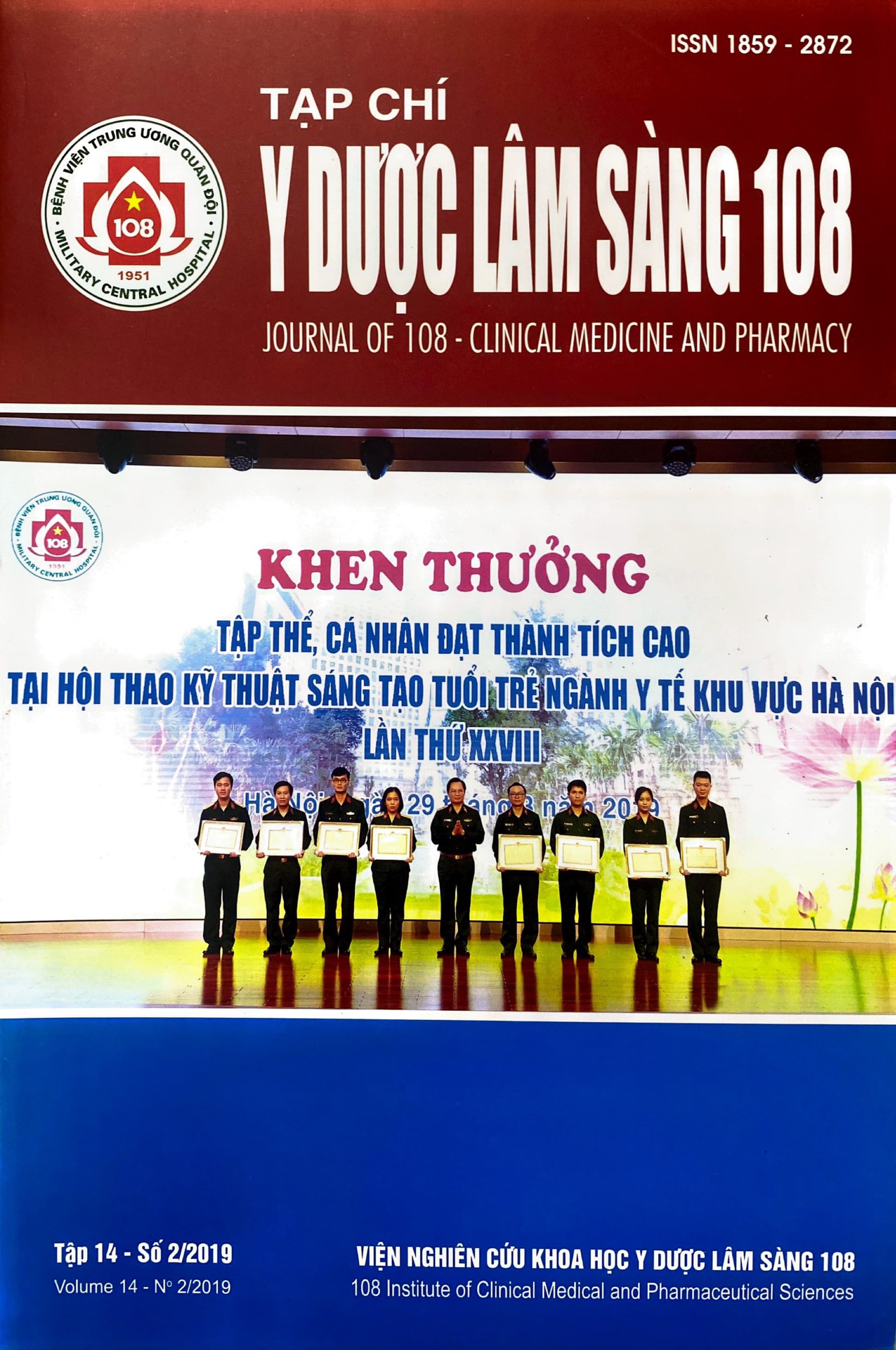The relation of SOD, GPx, MDA concentration and TAS with histopathological characteristic in chronic gastritis patients
Main Article Content
Keywords
Abstract
Objective: To study the relation of serum SOD, GPx, MDA concentration and TAS with histopathological characteristics in patients with chronic gastritis. Subject and method: A descriptive, cross-sectional study was conduted on 136 patient with chronic gastritis. Result: SOD activity in the group with atrophic inflammation 348.54 ± 458.19ng/ml was lower than the group without atrophic inflammation 406.95 ± 309.61ng/ml (p=0.04). SOD activity in the inflammatory group was active highest at 326.27 ± 450.79ng/ml, lower than the active inflammatory group with a mild level of 449.09 ± 481.27ng/ml (p=0.03). GPx activity in the group with atrophic inflammation was 182.71 ± 223.58pg/ml, lower than the group without atrophic inflammation 209.98 ± 159.53pg/ml (p=0.005). GPx activity in the group with dysplasia 94.2 ± 84.23pg/ml was lower than the group without dysplasia 199.97 ± 222.37pg/ml (p=0.03). TAS activity was lowest in the group of severe inflammation and highest in mild inflammation group (p=0.03). TAS activity in the group with atrophic inflammation was 2.02 ± 3.48U/ml higher than the group without atrophic 1.12 ± 1.46U/ml (p=0.002). MDA activity in the group with atrophic inflammation was 5.19 ± 6.84mmol/l lower than the group without inflammation at 7.19 ± 4.96mmol/l (p=0.006). MDA activity in the active inflammation group was low at 7.42 ± 8.34mmol/l, higher than the inflammatory group at the severity of 4.64 ± 5.22mmol/l (p=0.04). Conclusion: The activity of antioxidants in plasma is the lowest in cases of atrophic inflammation, at the same time the activity of antioxidants decreases with the degree of inflammation activity.
Article Details
References
2. Dröge W (2003) Oxidative stress and aging. Adv Exp Med Biol 543: 191-200.
3. Dulger AC, Aslan M, Nazligul Y et al (2011) Peripheral lymphocyte DNA damage and oxidative status after eradication therapy in patients infected with Helicobacter pylori. Polskie archiwum medycyny wewnĘtrznej 121(12): 428-431.
4. Hahm KB, Lee KJ, Kim YS et al (1998) Augmented eradication rates of Helicobacter pylori by new combination therapy with lansoprazole, amoxicillin, and rebamipide. Digestive Diseases and Sciences 43(2): 235-240.
5. Marjanović K, Dovhanj J, Kljaić K et al (2010) Role of zinc in chronic gastritis. Coll. Antropol 34(2): 599-603.
6. Noyan T, Guducuoglu H, and Ilhan M (2009) A study of oxidative stress parameters in anti-Helicobacter pylorus immunoglobuling positive and negative gastric cancer patients. Yonsei Med J 50(5): 677-682.
7. Pignatelli B, Bancel B, Plummer M et al (2001) Helicobacter pylori eradication attenuates oxidative stress in human gastric mucosa. Am J Gastroenterol 96(6): 1758-1766.
8. Schlemper RJ, Riddell RH, Kato Y et al (2000) The Vienna classification of gastrointestinal epithelial neoplasia. Gut 47(2): 251-255.
9. Rugge M, Pennelli G, Pilozzi E et al (2011) Gastritis: The histology report. Digestive and Liver Diseas 43: 373-384.
10. Sasaki M and Joh T (2007) Oxidative stress and ischemia-reperfusion injury in gastrointestinal tract and antioxidant, protective agents. J. Clin. Biochem. Nutr 40: 1-12.
 ISSN: 1859 - 2872
ISSN: 1859 - 2872
